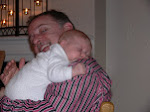I’m back in New York City. The Girlfriend and her son decide to stay a few extra days in the Catskills; I’m back to start a fresh week with The Kid. In the morning The Girlfriend and I drive east across the Hudson River to the town of Hudson, where I pick up a southbound Amtrak to Penn Station.
The Girlfriend’s happy to stay away for longer; I’m happy to be back sooner. Upstate, she feels “unbridled from the pandemic.” I feel like I’ve been away from something vital.
I can’t deny her arguments. Living in a space this dense requires a degree of strapping up — masking, gloving, constant awareness of physical distancing — unneeded in a sparsely populated town. With a 14-aisle supermarket less than a mile from our small house, we shopped every day over the last week; though at most two cashier lines were open, we never stayed in a checkout line longer than two customers, rendering the physical-distancing floor markers superfluous.
In Brooklyn, Before CoronaWorld I bought groceries in the market across the street every couple of days; now I go once every seven to nine days, bringing a shopping cart into my building elevator to carry my four or five overstuffed bags. I’ve got a freezer full of protein, cabinets filled with pasta, beans, grains; I plan menus and shopping lists like a micro-restaurant chef. We get wine delivered, pay exorbitant delivery fees to support our local bookstore. I haven’t been to a pharmacy in weeks, stepped into no other New York City establishment for more than a month.
The absence of city culture has left The Girlfriend bereft, stripping her of the city’s main attraction. Two to four Zoom meetings a day can’t replace the gallery openings, documentary screenings, political meetings, lunches, dinners, coffees, drinks that routinely filled her days.
I miss all those things, too. The mayor says the city’s on track to re-open by mid-June, but I remain frightened for the city’s devastated economy. The proprietor of a couple of Brooklyn bars spells out the difficulties: “Independent restaurants and bars are a defining element of a city’s very identity. To envision New York as a moonscape of nothing but the few major franchises that can fund a long loss, a monotony of McDonald’s, Chipotles, Domino’s and Sweetgreens, is to shudder at an unrecognizably reduced city.” So far the city has made no move to expand sidewalk and street seating, the single best tactic to help establishments stay viable.
Even if the city is no longer the pandemic’s epicenter — fewer new and overall hospitalizations; fewer deaths; more testing; tracing capacity on the way — returning feels deeply weird. My Amtrak train car holds perhaps eight people in its 80 seats; I’m not sure why a young woman, one of the three people who board in Hudson, has to sit directly across from me, have no idea why she decides to keep her mask around her neck. We make no eye contact; 90 minutes later, I let her get off first.
It’s midday Friday before a major holiday; Penn Station should be a zoo. Today I breeze through near-empty corridors, as if it’s 2 a.m. on a Tuesday. Everyone I see is masked, save for a meandering shoeless, shirtless man, who pivots to step directly in the footsteps of a man striding toward a train platform; the man senses being followed, turns, startles, backpedals with a low cry; the shirtless man startles too, backpedals away.
I venture into the subway for the first time in 10 weeks, to take a downtown C train. I’m the only customer at a half-dozen turnstiles. A nervous, wide-eyed man asks how to get to Queens; it takes me a few seconds to recall. (He wants an uptown E.) The train is pulling in as I get to the platform; two of us enter, through separate doors, making a total of four people in the car (seating capacity: 50+; overall capacity: 200+). I sit on my seat’s edge, make sure gloves touch neither seat nor pole nor door. The woman who boards with me sprays her seat with an aerosolized liquid, which from this distance I can’t smell; she sits without wiping it down. We move south through normally jammed stations (14th Street, West 4th, Canal, Chambers); no one enters or exits my car until a guy gets off in Brooklyn, at Jay Street. I decide to transfer to a G at Hoyt Schermerhorn; I have no problem maintaining physical distance on the platform, again enter a car with only three other passengers, stand until I exit a couple of stops later. I walk upstairs, see one other person in the station. What metropolis is this?
That said, I’m comfortable being home. I know a city of 8.4 million has far more people of a Trumpian mindset than the town to which I last week escaped. But, aside from a diversity of daily shoppers the Catskills supermarket might see in a month, my market features no signs like this at its entrance:
We walked every day in the Catskills, including on lovely trails with impressive views of the Hudson River Valley. But I miss contact, interaction with other urbanites, even at a distance. I miss tracking what’s happening in the half-dozen micro-neighborhoods through which I regularly stroll. I miss feeling part of something larger than my building, street, neighborhood, borough. I miss the city’s energy, even at its most depleted.
It might take years; many losses will be permanent. But I know that in some fashion New York City will return. It’s a comeback I not only want to witness but, in whatever tiny way, help shape. I’ve got to be here.
(New York state numbers on Thursday: 358,154 diagnosed with Covid-19, up 0.5 percent; 112 dead, to a total of 23,195, up 0.5 percent. Overall U.S. deaths: 1,286, to a total of 88,470, up 1.5 percent.)


No comments:
Post a Comment